In 2009, Erika and I made a short winter trip to Northern Finland and the Varanger Fjord in Norway. We picked out the first week of April, for the simple reason that we had some time for a trip during the Eastern Holidays.
When I told my birding friends about my plans for this trip, most of them were really surprised and their comment was: but there are almost no birds up there during this season! It is a fact that the more one travels northwards, the more the general species diversity gets poorer. It is also an undeniable fact that in Central Finland by the beginning of April it is still freezing cold, the land is covered by very thick snow layers and for most animals there is almost no food to survive up there. Plenty of the migratory subarctic and arctic bird species haven’t travelled back yet by then, so there are even less species present during this time of the year.
But, there were for me plenty of good arguments for the trip, which are: ‘the particular ease to see several of the Arctic forest birds’, ‘beautiful light, which is reflected by the snow – perfect for forest bird photography’ ‘huge numbers of the three Eider species in the Varanger Fjord, of which most of them have left the place during the classical birding season’, ‘the spectacular snow and ice covered landscapes’, ‘the quietness and silence and the lack of any people in the vast forests’, ‘still a small chance to see Northern lights’, …
Neljän Tuulen Tupa.
When we arrived in the evening in Ivalo, temperature was minus 30 °C, so we were not disappointed concerning ‘experiencing the freezing cold’… We headed the next day towards Hotel Neljän Tuulen Tupa, a small wood-built hotel along the road to Utsjoki. There was almost no traffic along the road and we were the only guests in the Hotel. Under here an image from the hotel, and a forest path starting just behind it.
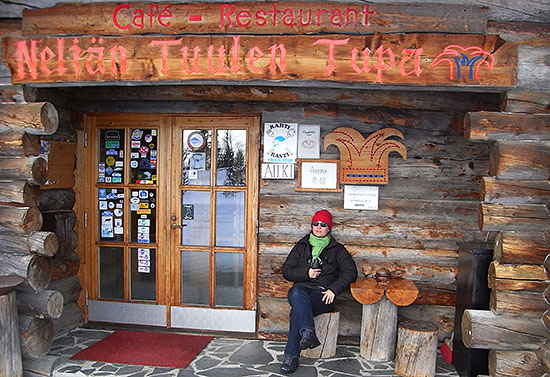
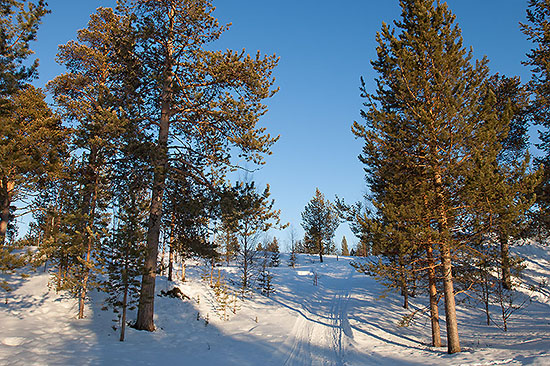
The owners have plenty of feeders in the garden and they throw out plenty of seed on the snow close to the parking place. This attracts several hundreds of birds during the entire day. After having had close looks at all the species, Erika went for a walk and I spent the whole afternoon photographing at the feeders. The two most common species around the feeders are Common Redpoll, Carduelis flammea, and Arctic Redpoll, Carduelis hornemanni. I estimate there were almost permanently 150 to 200 Redpolls in the area, and when we were there both species were almost equally represented in numbers.
Redpolls
Both species can be quite tough to distinguish. Moreover, some recent research suggests that they may both belong to one and the same species. Under here a ‘textbook male’ Arctic Redpoll, Carduelis hornemanni followed by a ‘textbook male’ Common Redpoll, Carduelis flammea.
Those are quite easy to distinguish. The male Arctic Redpoll has a pinkish washed out breast and very fine stripes along his sides, the head has a buff colour and the back has a more greyish colour. The male Common Redpoll shows more intense colours with a reddish breast and much more pronounced thicker stripes along his breast, belly and sides. The head and the back have a same brownish buff colour.
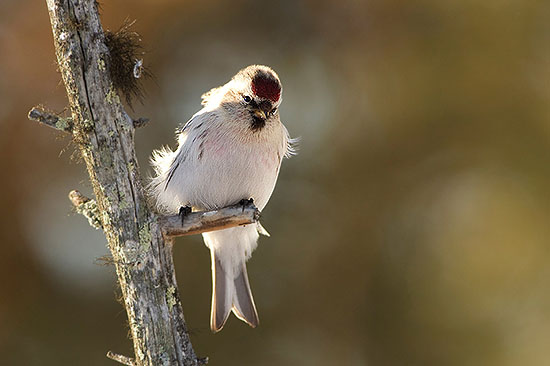
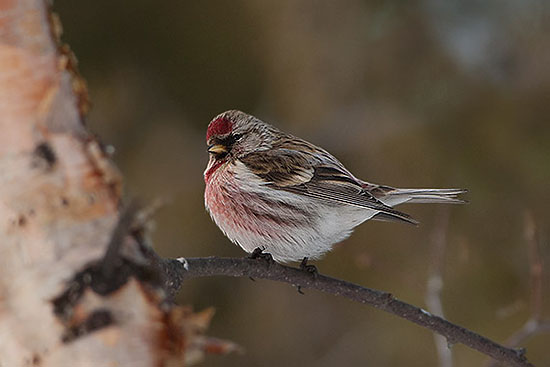
Under here a ‘textbook female or first winter male’ Arctic Redpoll, Carduelis hornemanni followed by a ‘textbook female or first winter male’ Common Redpoll, Carduelis flammea.
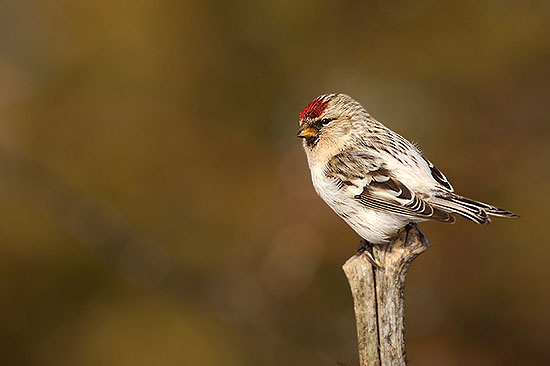
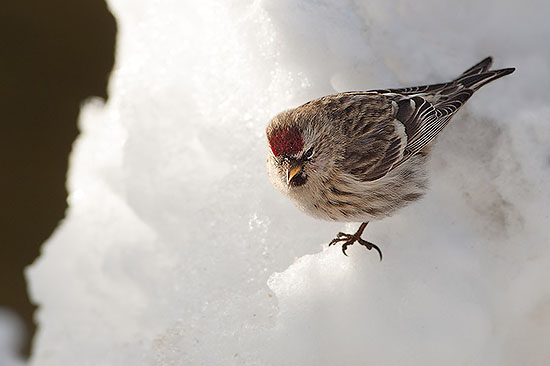
Hornemanni shows a warm buff face and throat, more contrasting with the colder colours from the breast and back. Stripes on the breast are relatively fine and mainly along the sides. Flammea has more pronounced stripes on and often all over the breast. The sepcies lacks the contrast between the warm colours from face and throat and the colder breast and back colours.
Under here a series from Arctic Redpoll, Carduelis hornemanni, with some of the individuals showing more intermediate features.
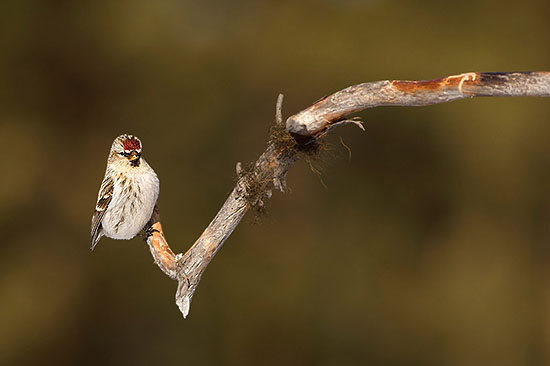
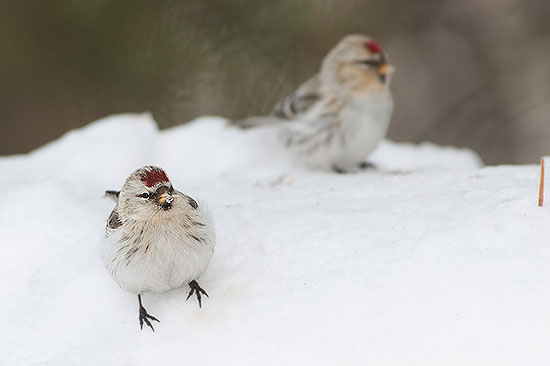
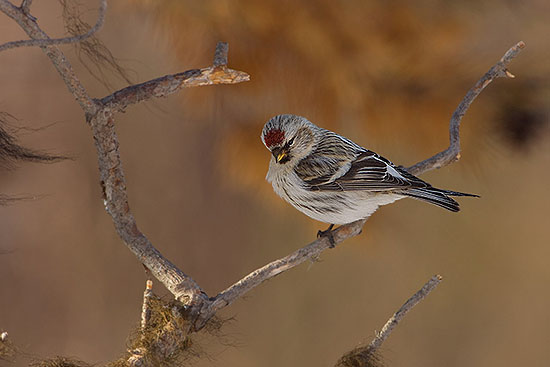
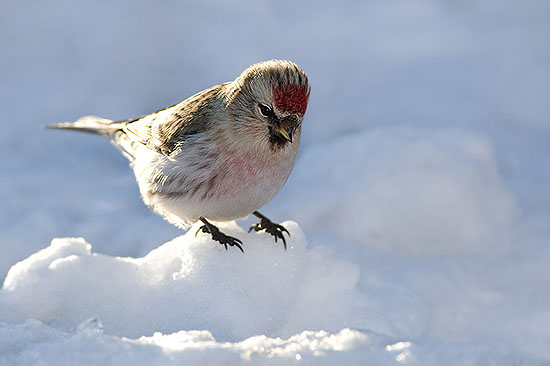
Under here a series from Common Redpoll, Carduelis flammea, with some of the individuals showing more intermediate features.
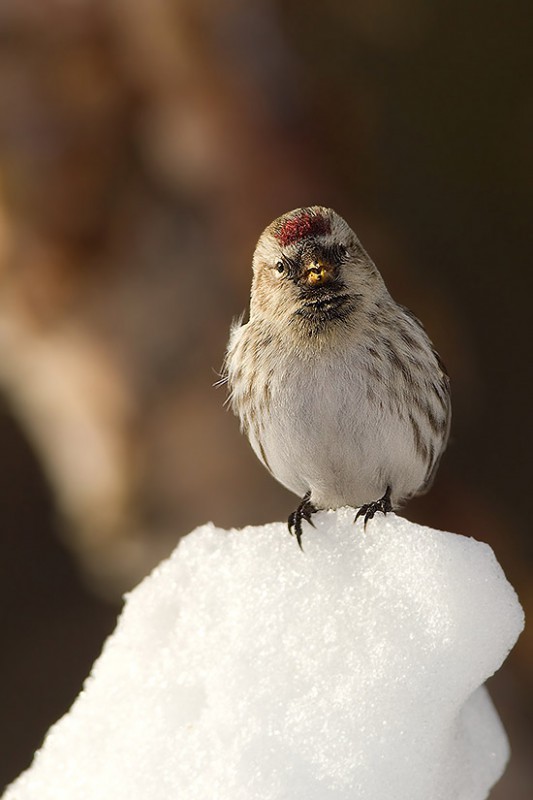
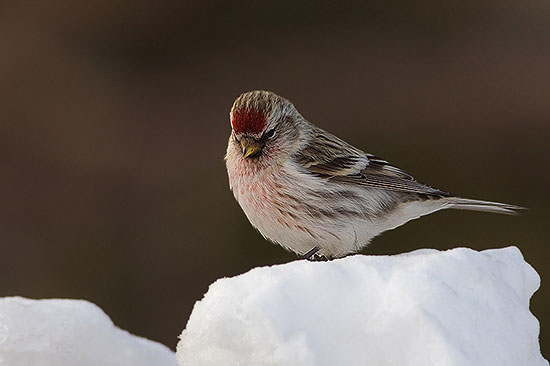
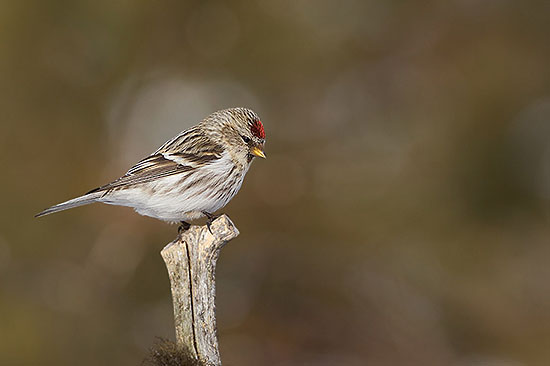
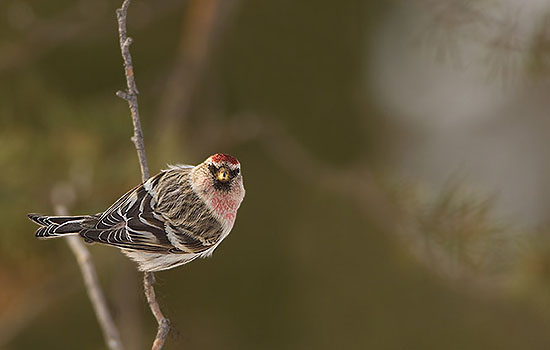
Siberian Tit
From time to time the feeders are visited by Siberian Tit, Parus cinctus, a widespread boreal forest bird occurring till East Siberia and Alaska. Under here some images.
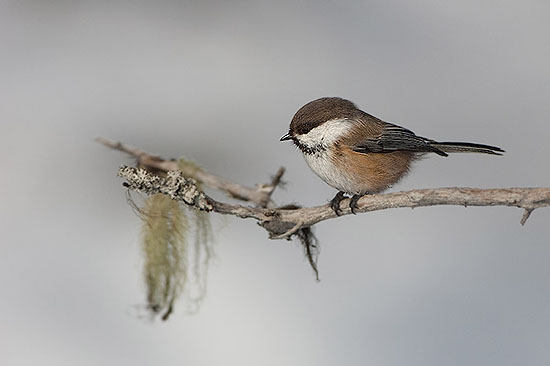
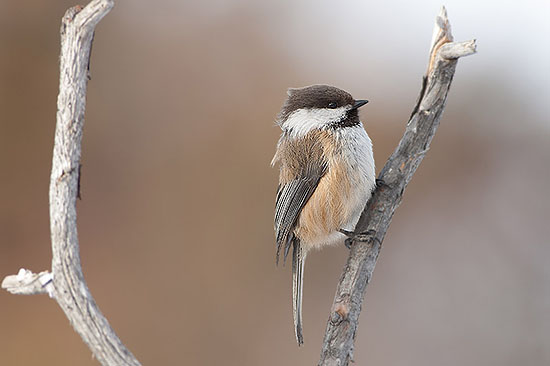
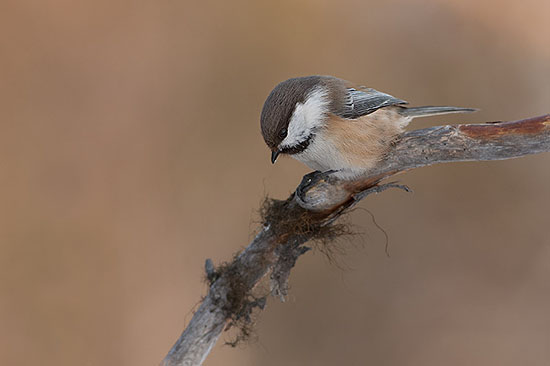
Siberian Jay
Another less regular visitor to the feeders is the Siberian Jay, Perisoreus infaustus, a widespread boreal forest bird occurring till East Siberia. Under here some images.
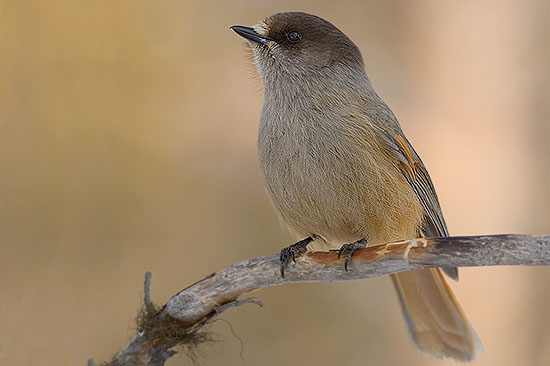
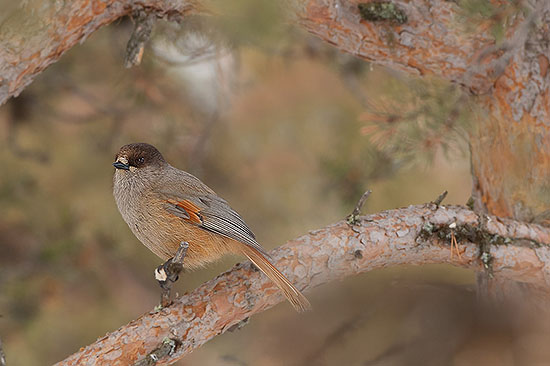
Pine Grosbeak, star bird of the feeders.
Definitely the most attractive bird around the feeders is the Pine Grosbeak, Pinicola enucleator. This very large finch is a tough species to observe during the summer, due to the low densities of the species and his rather unobtrusive behaviour. But during the winter they can be found in impressive numbers around feeders. During the peak moments, there were no less than 40 birds around the feeders!
The advantage of watching the birds for a long while, is that one can onserve particular behaviour such as this male eating snow, its only source of water in the frozen envirnoment.
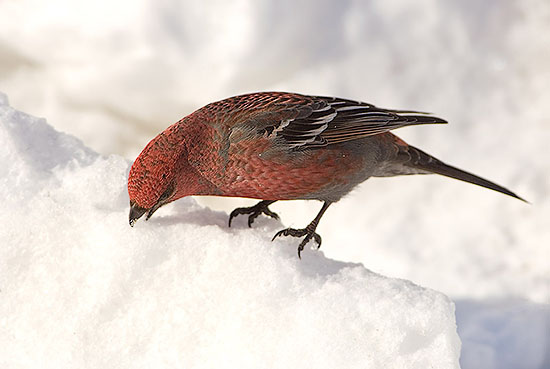
Under here some images from adult females and a first winter bird.
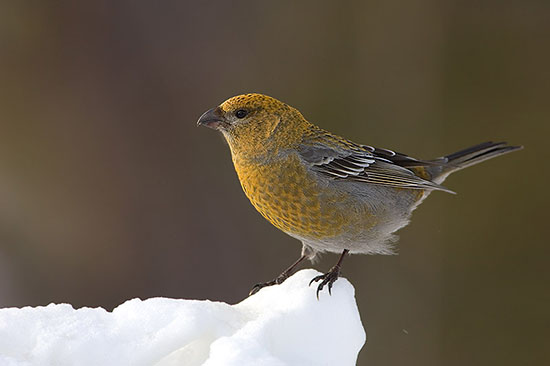
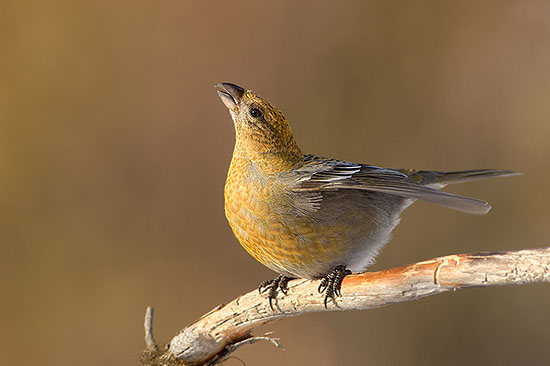
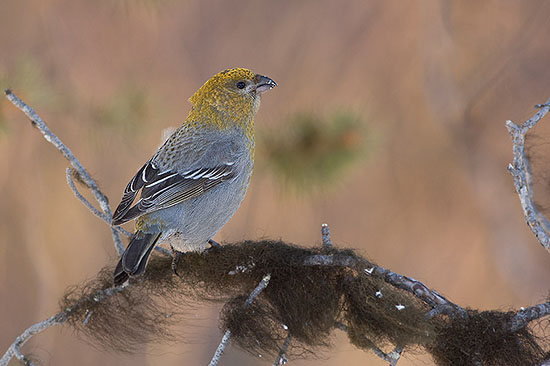
Under here some images from adult male birds, with their splendid intense reddish colour. It was really fantastic to photograph them under all kind of different light conditions.
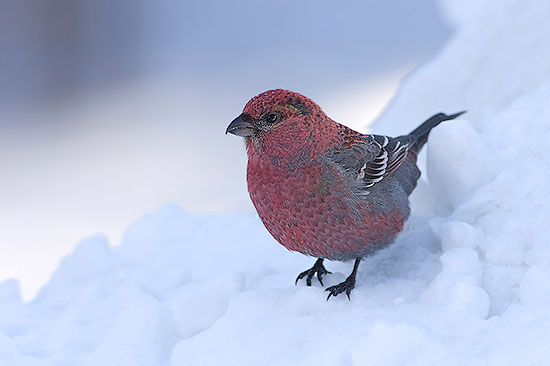
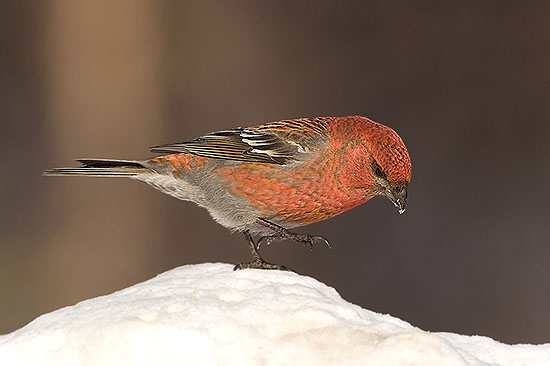
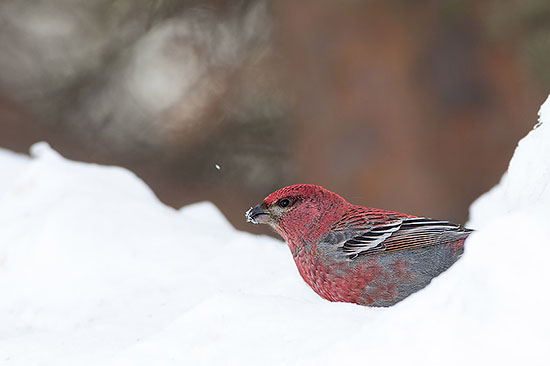
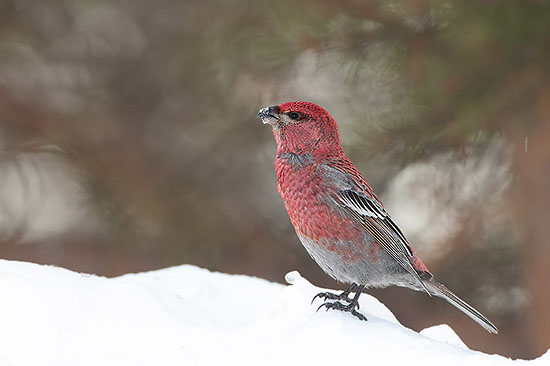
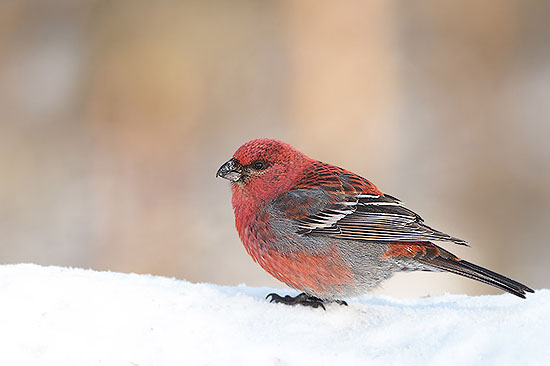
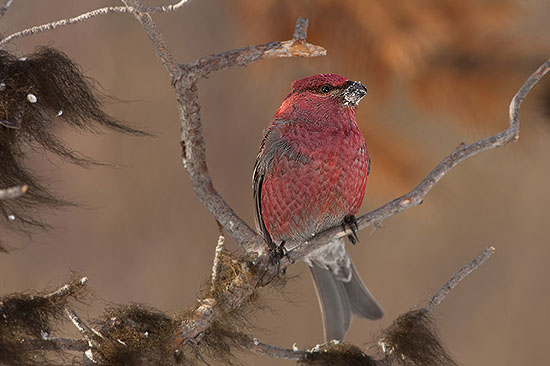
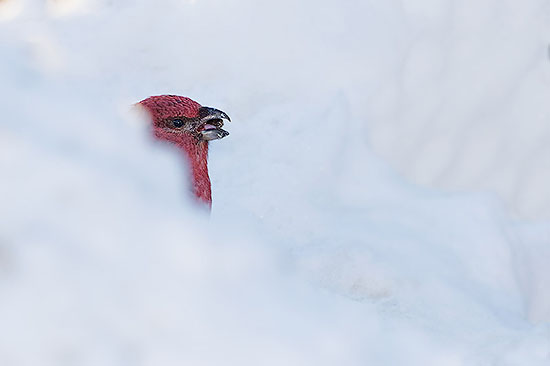
On the next day we left to visit a more remote hotel off road, a little more to the North and closer to Utsjoki. Under here some images from the typical landscape.
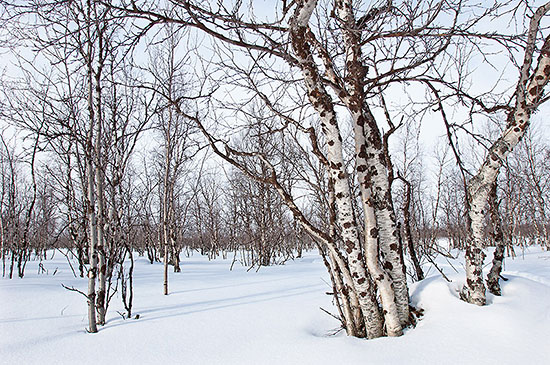
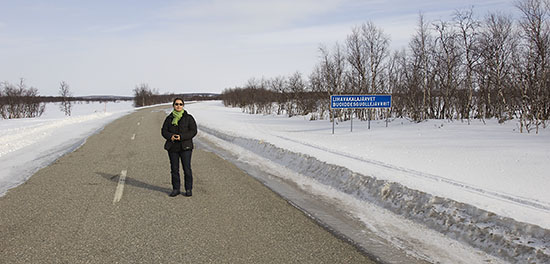
In Belgium we often have ten road signs next to each other, which is pretty confusing for the driver. The Finnish people are smarter: they just make longer road signs, sometimes even just for two words. On closer inspection those seem damn difficult words to pronounce, which in the end is not so easy neither!
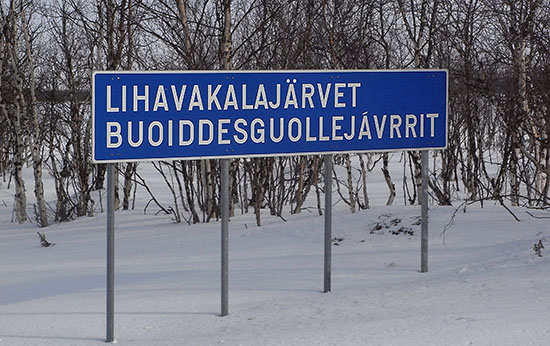
Along the road we came across a beautiful frozen waterfall scenery, see the images under here.
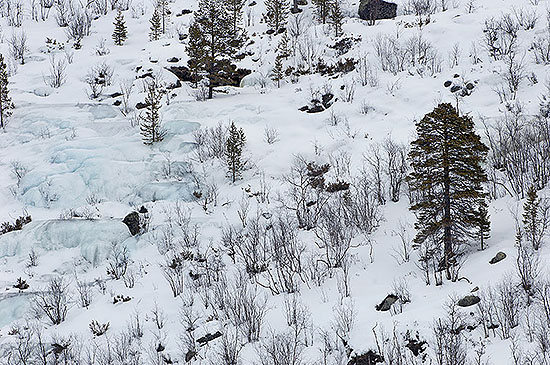
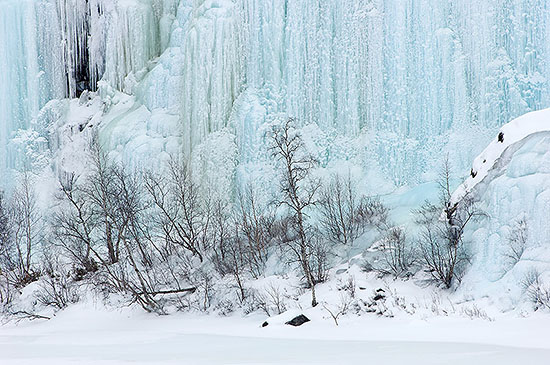
Hotel Pohjan Tuli.
Hotel Pohjan Tuli is a really large resort with dozens of saunas. It was even more surrealistic to be the only guests in the hotel. Under here, me at the start of a walk along a frozen lake.
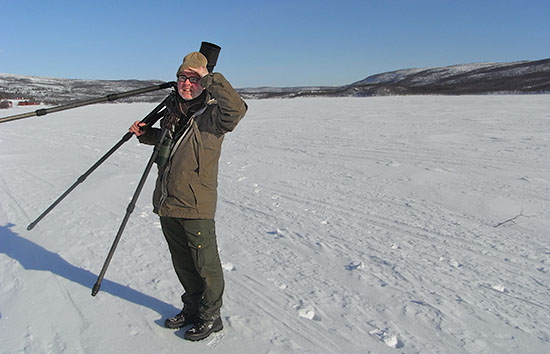
Unfortunately, the owner didn’t had much feeders and he didn’t use tons of seed like the owner of Neljän Tuulen Tupa did. So the numbers of birds around the feeders was a bit disappointing, but anyway, the landscape and the walks along the frozen lake were highly enjoyable! Under here an image from Bohemian Waxwing, Bombycilla garrulus. Apparently the first groups of this migrant had just arrived by then.
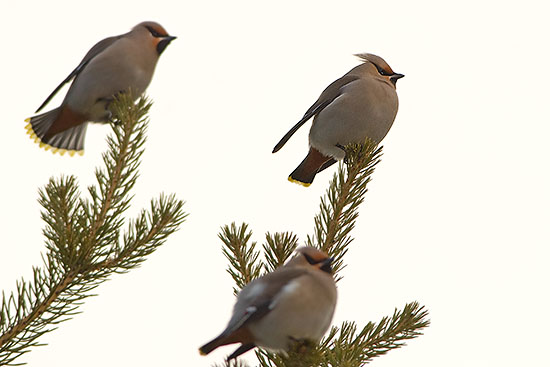
I’ll end with an image from a male Arctic Redpoll, less frame filling images from birds can be nice too!
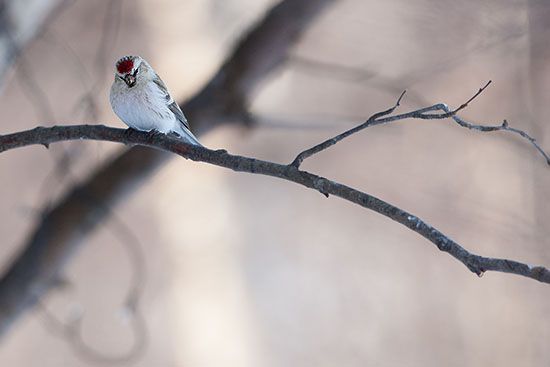
If you want to see the images on a larger scale, you can have a look at my portfolio from this trip.
